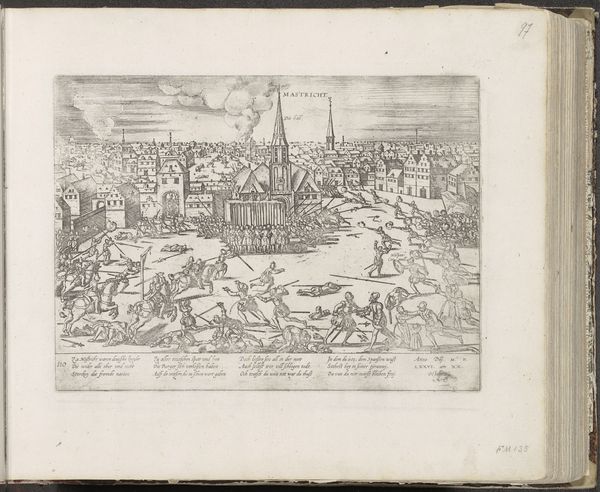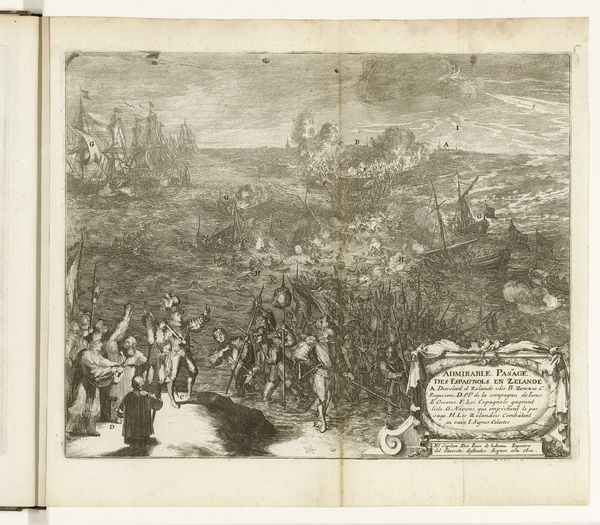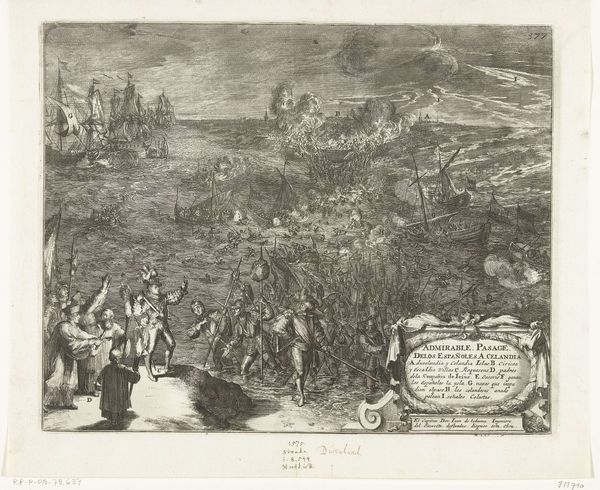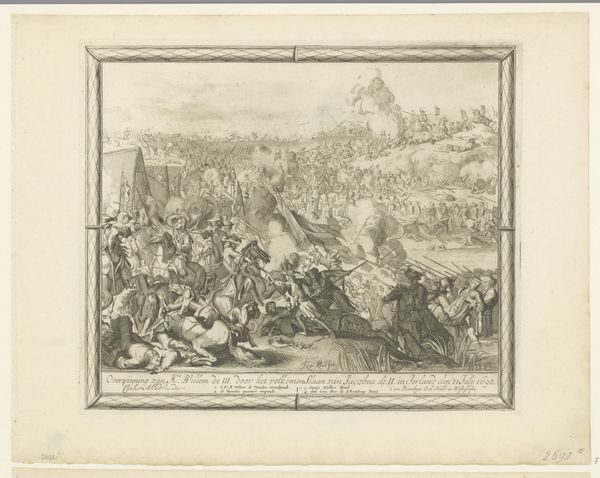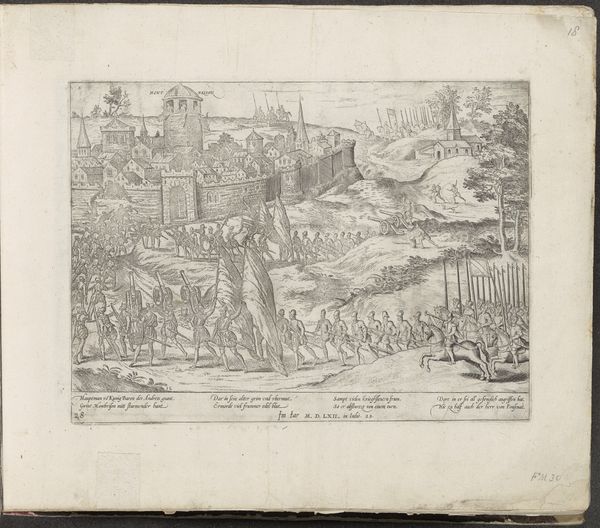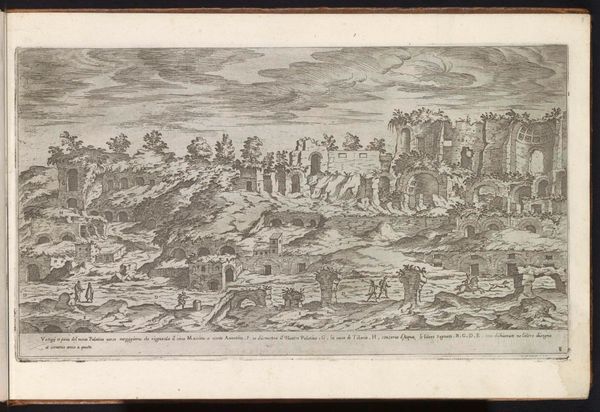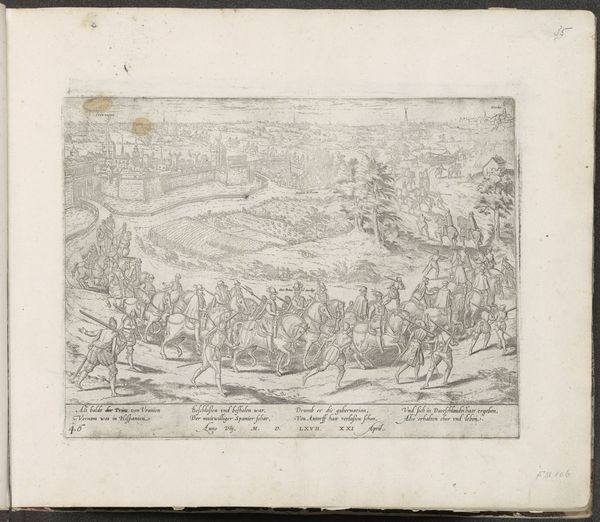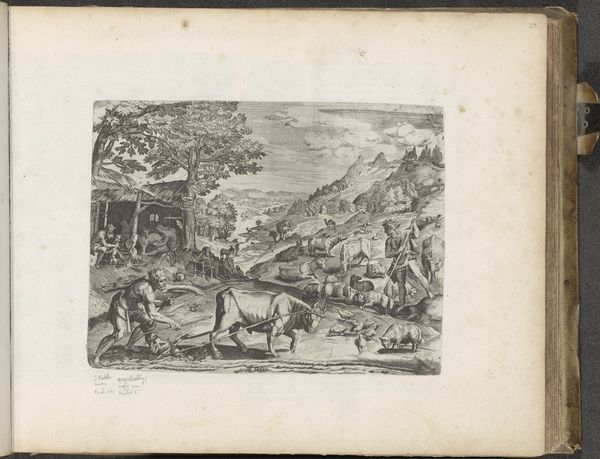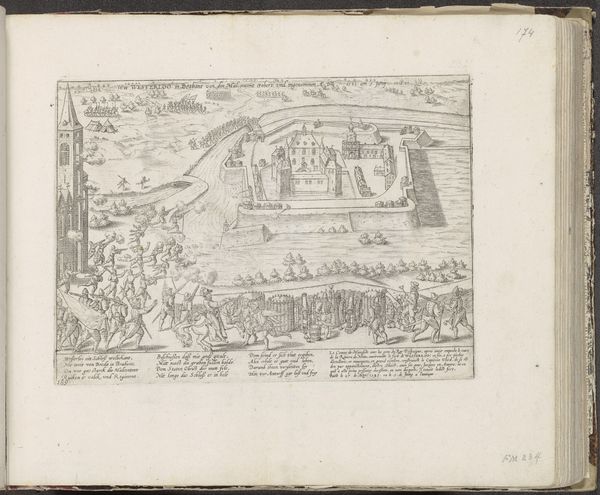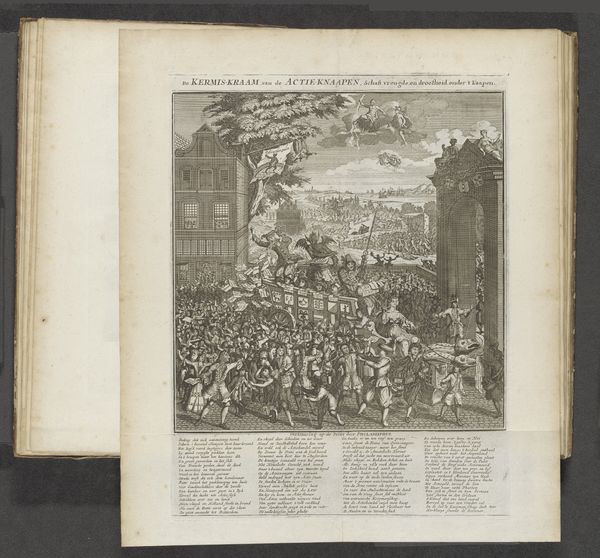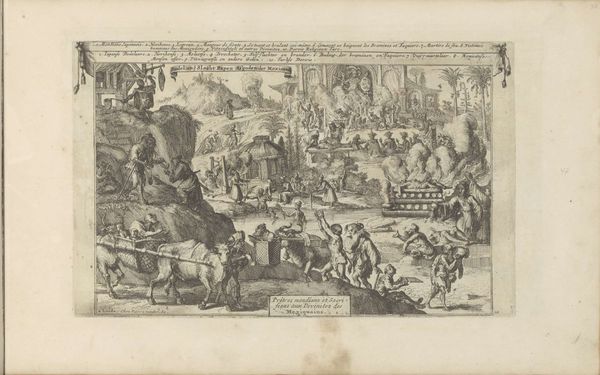
print, paper, engraving
#
medieval
#
narrative-art
#
ink paper printed
# print
#
landscape
#
paper
#
cityscape
#
history-painting
#
engraving
Dimensions: height 209 mm, width 277 mm
Copyright: Rijks Museum: Open Domain
Curator: Here we have "Moord te Maastricht, 1576," or "Massacre at Maastricht, 1576," a print dating from around 1576 to 1579 and attributed to Frans Hogenberg, part of the Rijksmuseum's collection. It captures a truly devastating historical moment. Editor: Devastating is right. The first impression is chaotic, look at the churning composition, all those figures crammed together. The lines are so fine yet create such a strong sense of unrest and horror. The artist made very good use of stark contrast to bring out detail. Curator: Absolutely. Hogenberg created this engraving on paper as a form of historical documentation, part of a broader series of prints depicting key events from the Dutch Revolt. It depicts the terrible sack of Maastricht by Spanish troops. Editor: You can see it in the frenzied action of all those individual forms that populate the entire piece—the composition leads your eye from one vignette of violence to the next across the city being plundered, almost no central resting point. A sea of chaos, like waves. Curator: This print served as a powerful piece of propaganda. Disseminating visual accounts of Spanish atrocities fueled resistance. Prints like these circulated widely and influenced public opinion significantly. Editor: From a formal standpoint, that panoramic cityscape provides a stark background that accentuates the foreground action, lending a sense of depth but also serving as a contrast. Even though there is little texture, you still have distinct layering. It contributes a cinematic feel! Curator: Exactly. It’s not just art; it’s historical record shaped by political purpose, influencing historical narratives then, and continuing to shape them now. Understanding that context adds a layer of complexity to the visual impact. Editor: True, and analyzing how the artist manipulates form here contributes to the propaganda effect you’ve discussed; through all of those little details like figures frozen in terror or struggling with invaders, Hogenberg shows how one visual can carry emotional and political weight simultaneously.
Comments
No comments
Be the first to comment and join the conversation on the ultimate creative platform.
